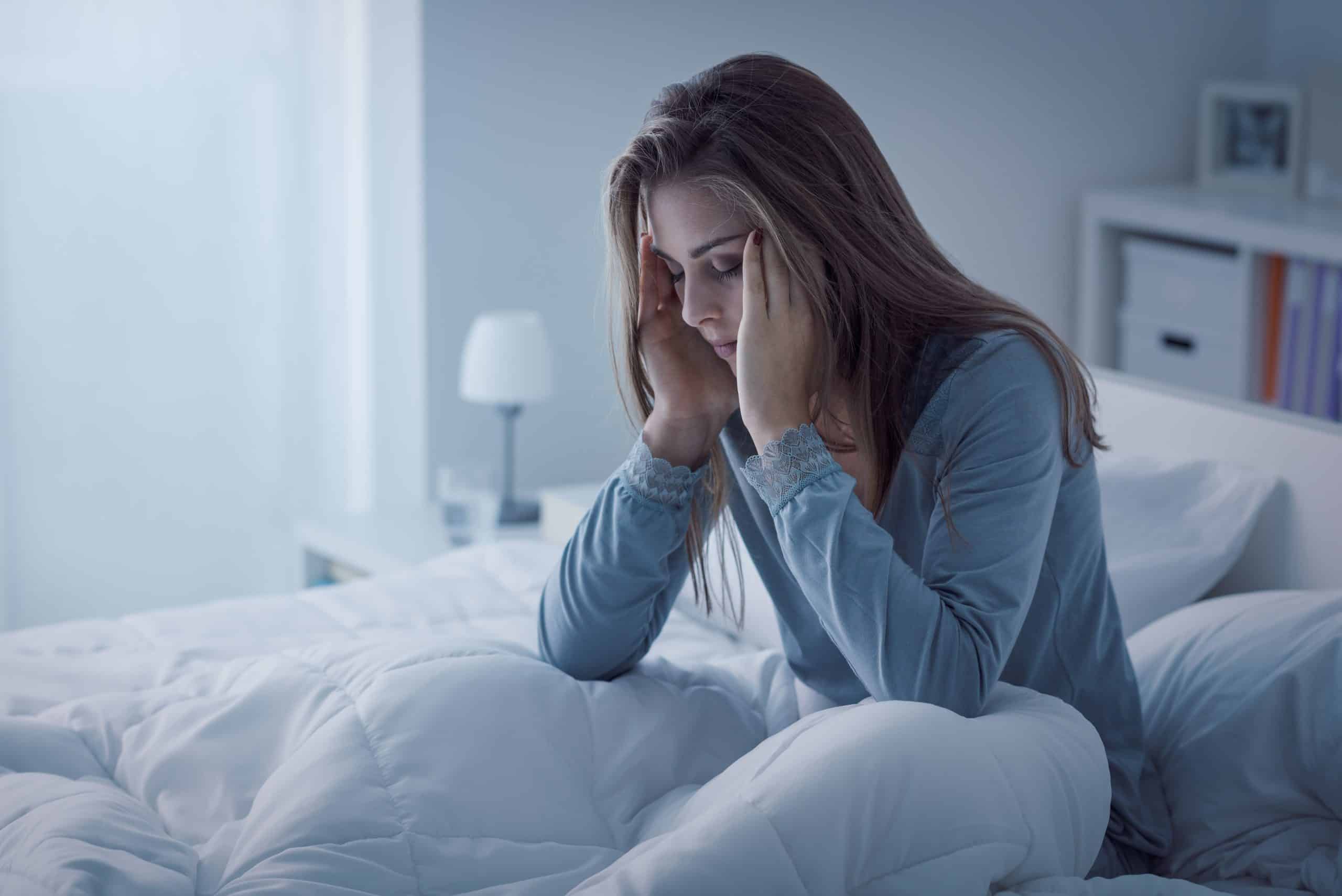Sleep is a physiological function to which little or no attention is often paid. If we sleep an average of 7 to 8 hours, we spend almost a third of our lives sleeping. Sleep disorders disrupt the level of daily functioning. The rhythm of wakefulness / sleep in a healthy person is synchronized through the day / night cycle which is regulated by two components: the internal factor (what we call our biological clock) and the environmental factors. In normal sleep, these two factors are in balance, and their unevenness will result in different forms of sleep disorders. Insomnia is certainly one of the most common forms of sleep disorders.
According to some statistics, 10 to 40% of the general population suffers from insomnia.
The disorder is defined by difficulty falling asleep or maintaining sleep, ie altered quality or quantity of sleep (or quality or length of sleep), which then has consequences for daily dysfunction, such as fatigue, decreased mental abilities: concentration, memory, etc. Some people we call short sleepers only 5 hours of sleep are enough and we cannot say that they suffer from insomnia. According to some research, long-term, chronic insomnia can also cause certain physical damage, especially in the area of the vascular system. The causes of insomnia are numerous and different, and according to the duration of insomnia we are divided into: transient, short-term and chronic.

Transient insomnia lasts for several nights; the disorder is usually associated with stress, excitement (before exams, before surgery), then climbing heights (due to reduced oxygen concentration and breathing problems) and changes in time zones (travel from one time zone to another, the so-called Jet lag syndrome). The clinician rarely encounters this type of insomnia, and the therapeutic disorder is solved by the use of medications – hypnotics, of which there are many on the market.
Short-term insomnia lasts up to three weeks, usually associated with severe or persistent stress (reactions to grief, illness, health concerns). This type of insomnia should be treated pharmacologically with short-acting hypnotics and behavioral changes achieved through sleep hygiene and stress management. Mourning reactions occasionally require the use of antidepressant therapy, in consultation with a specialist psychiatrist.
Sleep hygiene includes the hygienic dietary measures necessary for normal sleep. These are lying down and getting up at the same time, sleeping in a room of appropriate temperature and protected from noise, avoiding major physical activities just before bedtime as well as avoiding talking about work or content that seems frustrating. Before going to bed you should avoid eating larger meals, alcohol, black coffee, smoking.
Chronic insomnia, which according to statistics affects 3 to 4% of the population, is the type of insomnia that we most often encounter in clinical practice, and which is a great challenge for the clinician. The Center for Sleep Disorders PB Vrapče is mostly visited by people with chronic insomnia, which in some years lasts for years, and they have already been treated with medication for this disorder.
The cause of chronic insomnia, unlike the previous two, is rarely directly clear and it is very likely that several factors are involved in the development of the disorder. For a proper therapeutic approach, it is first necessary to meticulously take a history and determine diagnostic techniques.
Anamnestic data refer to: type of insomnia (difficulty falling asleep, difficulty maintaining sleep, waking up early), time and circumstances of the disorder, possible existence of similar cases in the family and data on previous treatment.
What cause insomnia:
- Eating too much late in the evening
- The existence of a psychiatric disorder
- Restless Leg Syndrome
- Medical factors such as pain due to a physical illness, respiratory disorders, sleep-disordered breathing
- Chronic insomnia caused by circadian rhythm disorders as is the case in shift workers.
- Stress
- Alcohol abuse
- Poor sleep habits
Insomnia Symptoms
Insomnia symptoms may include:
- Difficulty falling asleep at night
- Waking up during the night
- Waking up too early
- Not feeling well-rested after a night’s sleep
- Daytime tiredness or sleepiness
- Irritability, depression or anxiety
- Difficulty paying attention, focusing on tasks or remembering
- Increased errors or accidents
- Ongoing worries about sleep
If any of these conditions are at the root of insomnia, it needs to be treated.
Diagnostic methods are reduced to conducting an all-night polysomnographic recording, at the Center for Sleep Disorders, as objective methods for assessing sleep, and the recording technique will be determined by a doctor. At the same time, the patient may be asked to keep a sleep diary.
All-night polysomnographic imaging will help in the differential diagnosis of conditions such as the so-called. idiopathic insomnia (insomnia of unknown origin, and psychophysiologically conditioned insomnia). The first starts very early, is more often registered in women, is marked by difficulty falling asleep with morning fatigue, while the second type of insomnia is mostly registered in people whose sleep has been occasionally worse before, and more pronounced disturbances occurred due to stress.
People with psychophysiological insomnia show significantly better quality of sleep in the laboratory than at home, which is not the case in people with idiopathic insomnia. In people with idiopathic insomnia, we will apply therapeutic behavioral techniques (learning techniques) and chronotherapy, ie we will determine the most optimal time for sleep and how to use that time to apply relaxation therapy and sleep medications.
Some forms of sleep disorders related to circadian rhythm disorders are reduced to delayed sleep. Older people fall asleep earlier and, accordingly, wake up earlier, while in younger people we often notice a delay in the beginning of sleep, which shortens the duration of sleep. These two disorders can be treated with light therapy, ie exposure to light stimuli, which has been shown to be effective in regulating the onset of sleep.
source: mayoclinic
MORE HEALTH HEWS: How to look good in the fifties